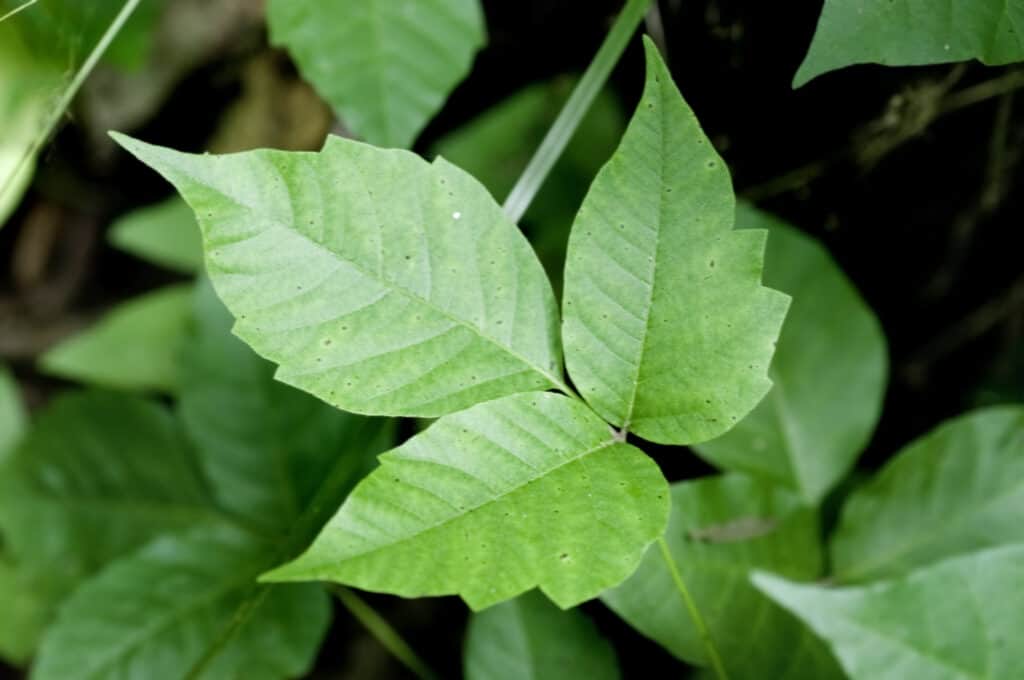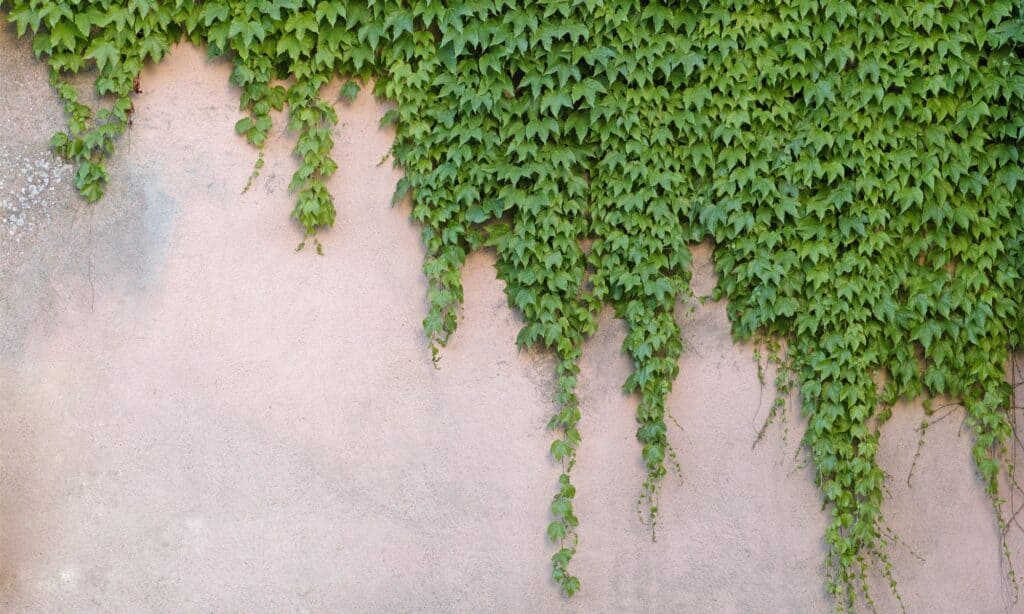Full Comparison
Boston ivy and poison ivy look very similar, and many people are allergic to both plants, making it even harder to identify whether the plants growing in your yard are Boston ivy or poison ivy. However, both plants have deceptively beautiful green-red leaves that come to a point, and both plants can give you a rash if you touch them. So, what is the difference between Boston ivy and poison ivy? Keep reading to find out!
What Are the Differences?
The main difference between Boston ivy and poison ivy is that Boston ivy isn’t typically poisonous and generally isn’t considered a harmful plant. On the other hand, poison Ivy is almost universally considered a nuisance plant that people work very hard to eradicate.
Poison ivy is part of a small, distinct group of poisonous plants that people typically try to avoid. The other two plants in this designation are poison oak and poison sumac.
Though there have been reports of Boston ivy causing a contact rash, these reports are few and far between, implying that some people are specifically allergic to Boston ivy rather than suggesting plant toxicity.
What Is Poison Ivy?
Poison ivy is a woody vine. Unfortunately, this woody vine composition can make eradicating the plant from your property challenging. Most parts of the plant contain a substance known as urushiol that produces the characteristic contact dermatitis we associate with poisonous plants.
Poison ivy can be especially challenging to eradicate because the plant’s urushiol can cause poisoning up to a year after its initial contact. Furthermore, urushiol can cause poisoning while burning the plant. So, even this “non-contact” eradication method doesn’t offer protection from poison ivy poisoning.
Despite the name and appearance, poison ivy is not actually a type of ivy. This plant belongs to the cashew family and can appear as a climbing vine or small shrub in the wild.
What Is Boston Ivy?
Boston ivy is another woody vine, and like poison ivy, it’s not considered true ivy, either. This plant doesn’t produce urushiol, even if it might look similar to Poison Ivy at first glance. It’s known by many names, including Japanese Ivy, Grape Ivy, and Japanese Creeper.
Boston ivy is a climbing vine that can reach heights of 30 meters (100 feet) if well-maintained. However, this climbing nature of the plant is a double-edged sword. While the plant can climb structures like trellises, it can also climb buildings. When the plant climbs the side of a building, it runs the risk of damaging the building’s siding, walls, or other structural components. Thus, it’s recommended to regularly prune Boston ivy to prevent the plant from damaging your property.
Where Is Poison Ivy Found?
Poison ivy grows throughout most of the continental United States. Alaska and Hawaii are the only two states in which poison ivy does not grow. Alternate species of Poison ivy, sometimes considered subspecies of the poison ivy that grows in the U.S., grow in East Asia and Canada.
The species of poison ivy that we most commonly associate with America can also be found in Bermuda, Mexico, Central America, and the Bahamas.
Where Is Boston Ivy Found?
Boston ivy is native to East Asia. However, the plant has been successfully introduced to other regions and is often associated with the Northeast United States. Boston Ivy is incredibly tenacious and can typically grow in most climates. In addition, it’s a perennial plant, meaning it will return in the springtime, after dying off in the winter.i
What Does Poison Ivy Look Like?
Poison ivy has a distinctive appearance that most people become familiar with in childhood. The plant will typically have reddish-green leaves grouped into bunches of three. Remember the old saying? Leaves of three? Let it be.
In addition to a distinctive pattern of three leaves, the leaves are typically thick, leathery, and coated in oil. It’s this oil (urushiol) that causes a an itchy rash in those who are allergic to poison ivy. Upon close inspection of the plant, you can typically see the oil, as urushiol makes the leaves shiny.

Remember the old saying?
Leaves of three? Let it be.©Tim Mainiero/Shutterstock.com
What Does Boston Ivy Look Like?
Unlike poison ivy, Boston ivy has single leaves that generally have between three to six points each. A climbing Boston ivy will overtake structures when planted nearby. Boston ivy will grow on any structure it is planted near, causing structural damage when left growing unattended on buildings.

Boston ivy typically grows as a shrub or a climbing vine.
©iStock.com/ffaber53
What Do You Do If Poison Ivy Grows In Your Yard?
Most people don’t knowingly cultivate poison ivy, but if you think your yard has poison ivy growing in it, the best thing to do is move to eradicate it.
Best practices for eradicating poison ivy are pulling up the plant by its roots and enclosing it in a plastic bag, tightly sealed, before placing the plant in the trash. Other methods of removal include burning the plant, though this method risks exposure to the urushiol oil the plant produces. Not to mention that often after burning poison ivy, it returns. Chemical treatments are generally an effective means of ridding your yard of poison ivy, but beware that chemical herbicides can cause worse issues than poison ivy. For example, these herbicides can kill off desirable plants if they come in contact with them.
What Do You Do If Boston Ivy Grows in Your Yard?
Boston Ivy is generally considered an ornamental plant and can be a welcome addition to the home landscape. However, if the plant climbs the side of your house or along your wall, it can damage the structure, so you’ll want to prune the plant regularly. Buying trellises to support the plant and encourage it to climb beyond your walls is an excellent way to keep Boston ivy at bay.
There’s no need to eradicate Boston Ivy plants, as these plants are generally harmless. While contact dermatitis isn’t typically associated with Boston ivy plants, there have been occasional reports of people having allergic reactions to the plant. Be aware that it could cause a mild rash.
Final Thoughts
Boston and poison ivy might look similar at first glance, but they’re very different plants with different growing habits. However, special care must be taken around both of these climbers: poison ivy for its urushiol and Boston ivy for its habit of climbing (and potentially damaging) structures.
The photo featured at the top of this post is © Tim R7/Shutterstock.com
Sources
- Encyclopedia Britannica, Available here: https://www.britannica.com/plant/poison-ivy-plant
- U.S. Food and Drug Administration, Available here: https://www.fda.gov/consumers/consumer-updates/outsmarting-poison-ivy-and-other-poisonous-plants
- Encyclopedia Britannica, Available here: https://www.britannica.com/plant/Boston-ivy
- Wikipedia, Available here: https://en.wikipedia.org/wiki/Poison_ivy
- Wikipedia, Available here: https://en.wikipedia.org/wiki/Parthenocissus_tricuspidata
FAQs (Frequently Asked Questions)
Why does Poison Ivy give you a rash?
Poison Ivy produces urushiol, which is an irritant to the skin.
How do you get rid of Poison Ivy?
You should use a herbicide containing glyphosate or triclopyr.
Is Boston Ivy true ivy?
Boston Ivy is not true ivy.
Where does Boston Ivy come from?
Boston Ivy comes from East Asia and has been successfully introduced to many regions of the world.
Is Boston Ivy poisonous?
Boston Ivy is not regarded as poisonous. However, some anecdotal reports of allergic reactions in response to Boston Ivy exist.
Thank you for reading! Have some feedback for us? Contact the AZ Animals editorial team.






